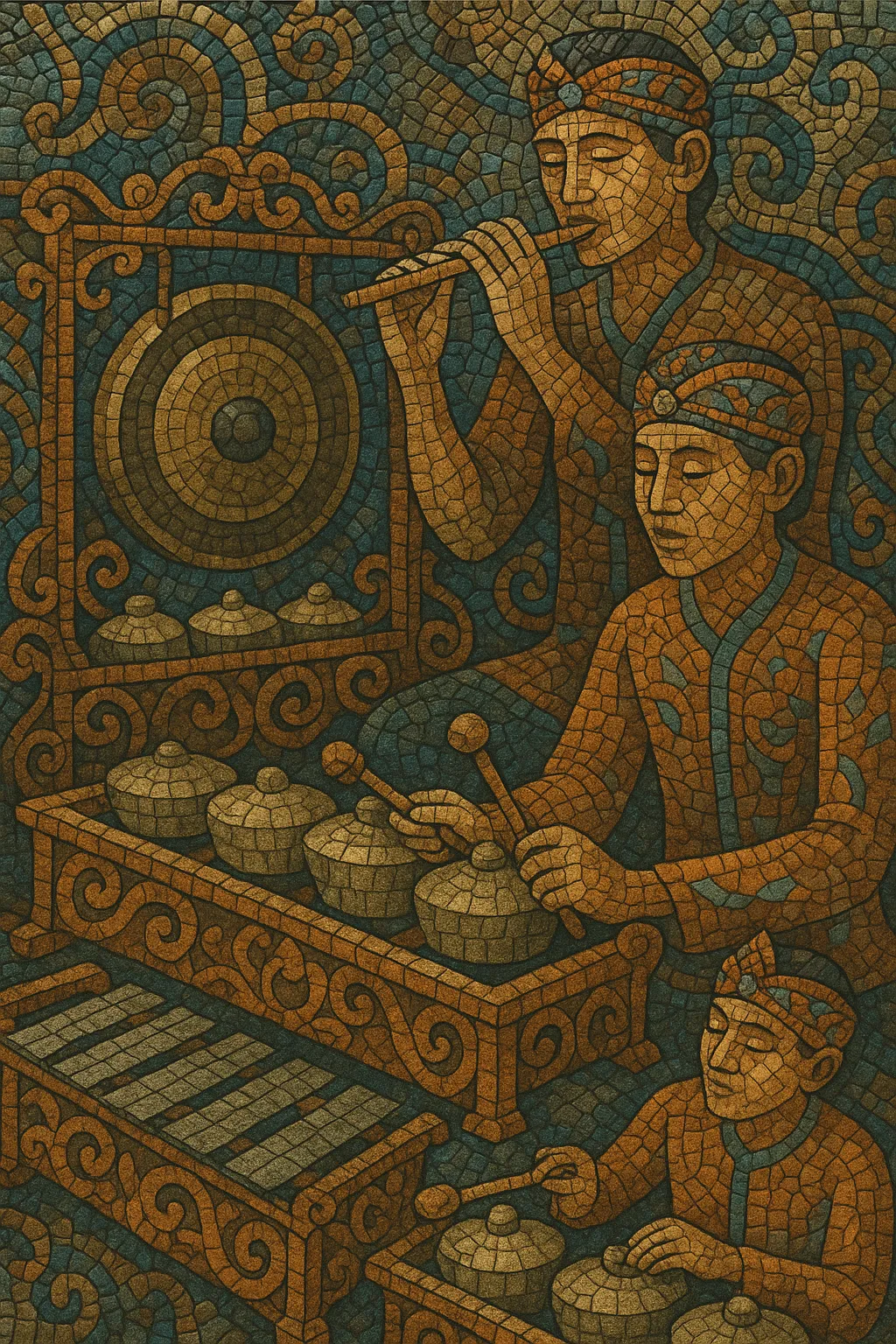Gamelan degung is a Sundanese court-derived gamelan tradition from West Java, Indonesia, performed on a distinctive, reduced-set pelog tuning known as laras degung. Its core sound centers on a stately, resonant colotomic cycle marked by the goong ageung (large gong), with interlocking metalophones and kettle gongs weaving heterophonic textures.
Compared with Central Javanese gamelan, degung often feels clearer and more transparent in texture, with a strong melodic core (balungan) and elegant elaborations from bonang and suling (bamboo flute). It is used for ceremonial occasions, dance accompaniment, and vocal repertoires (kawih), and today also appears in popular and fusion contexts.
Gamelan degung took shape in the Sundanese courts of the Priangan region (Bandung, Cianjur, Sumedang) by the 1800s. The term “degung” came to denote a particular ensemble format and a five-tone subset of pelog (laras degung), producing a dignified, ceremonially resonant sound suitable for court events, dance, and vocal art.
In the early–mid 20th century, Sundanese scholars and composers—especially R. Machjar Angga Koesoemadinata—documented, analyzed, and codified Sundanese scales and pedagogy (including the daminatila solmization used for laras degung). Ensembles in Bandung helped standardize instrumentation and repertoire, clarifying the role of jengglong, bonang, saron family, kendang, and goong ageung within colotomic cycles.
After Indonesian independence, Radio Republik Indonesia (RRI) Bandung’s broadcasts brought degung beyond courtly contexts to a wider public. The 1970s–80s saw recordings and stage presentations that featured kawih (Sundanese vocal pieces) with degung accompaniment, as well as collaborations with dancers and theatre, consolidating degung as a cultural emblem of West Java.
From the late 20th century onward, degung ensembles appeared in universities and cultural institutions in Indonesia and abroad. Artists and educators fused degung with popular idioms and concert music, while maintaining traditional ceremonial functions. Today, gamelan degung thrives both as a heritage practice and as a flexible platform for composition, education, and cross-genre collaboration.


